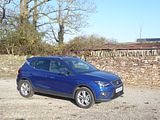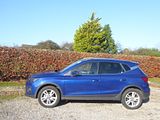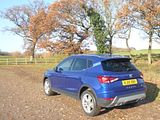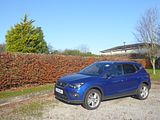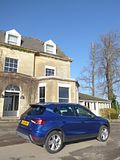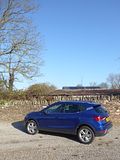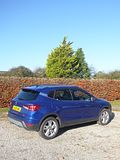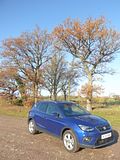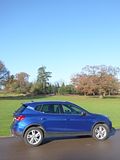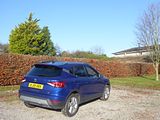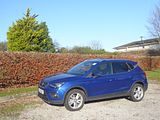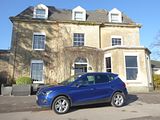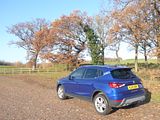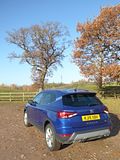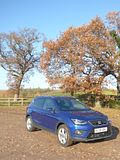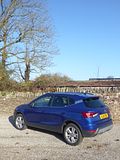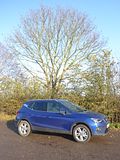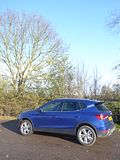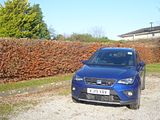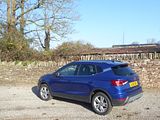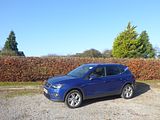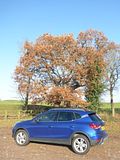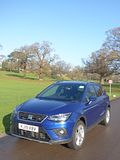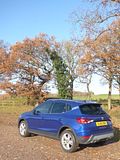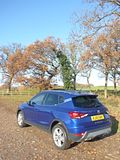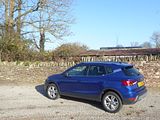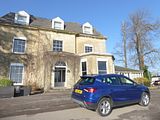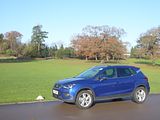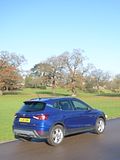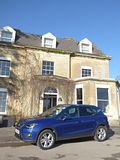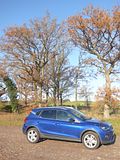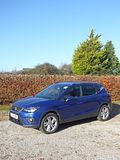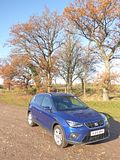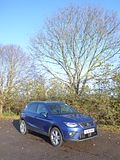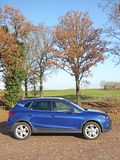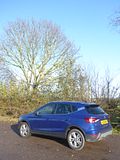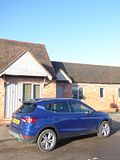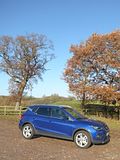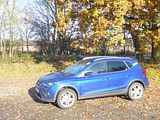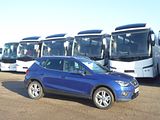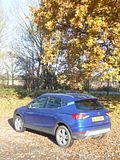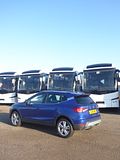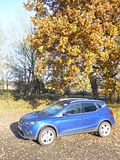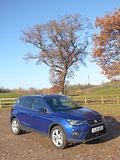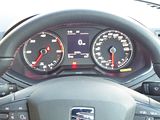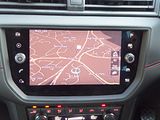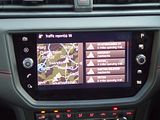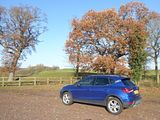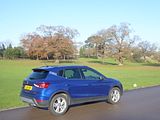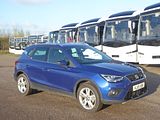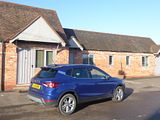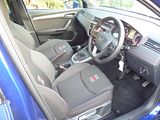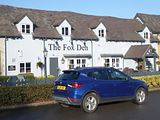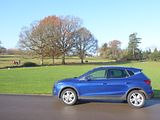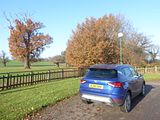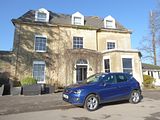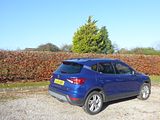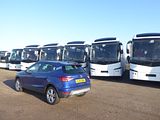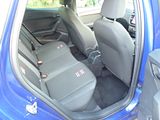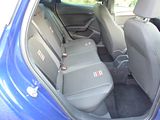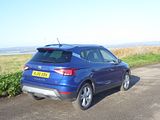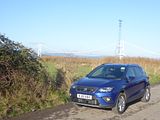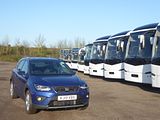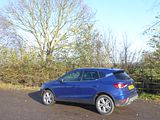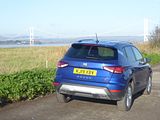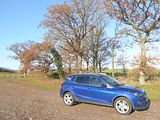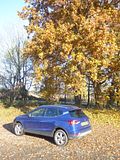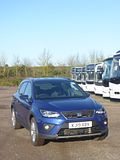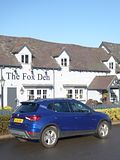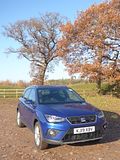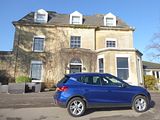In recent years, the market has shifted relentlessly towards the crossover type vehicle, with this bodystyle claiming sales in favour of traditional saloon, hatch and estate models at quite a rate. For the last few years, manufacturers have been busy adding them to their ranges in all sizes from compact to massive, so you might have thought that we’d got a full house, and that any new models would simply be replacements for existing cars as they reached the end of their model life, but that’s not quite the case. In the autumn of 2017 quite a few more small, B-segment models made their debut, adding further to the choice for family cars. With the Hyundai Kona, Skoda Kamiq, and VW T-Cross all new additions to the class as well as the MG ZS and Citroen C3 Aircross replacing outgoing cars. Also among them was the subject of this test, the SEAT Arona. Hailing from the mighty VAG empire, this was a logical addition to the Spanish maker’s range that could draw on the platform that underpins not just the latest SEAT Ibiza but also the VW Polo and Skoda Fabia and would add further choice to the company’s offerings for those who did not want the broadly similar VW T-Cross that launched at the same time. To my eyes, the Arona looks better, with styling that shares a strong family look not just with the Ibiza but also the larger Leon and Ateca, resulting in one of the best looking cars in the class. With this test, I wanted to find out if this is also one of the better cars to drive and live with, needing to beat the current low bar set by such humdrum models as the Vauxhall Mokka and Renault Captur. Time to find out.
As the market moves away from diesel engines, it was perhaps a surprise to find that the test car had the familiar 1.6 TDi unit powering it rather than the latest generation of 1.0 and 1.5 litre petrols that are also available in the Arona. The 1.6 litre diesel is available with two power outputs, 95 or 115 PS and it was the more powerful unit that featured here. Years of development work have made this quite a refined unit and it also benefits from far more torque than you get with a petrol engine of the same power. I certainly would not write off the diesel just yet. First gear is not a lot of use, as you almost instantly need a gear change but thereafter, the Arona goes well, with strong acceleration in-gear from almost whatever speed you are doing. The engine is willing and noise levels are well suppressed, so this is a quiet car for a motorway journey. To get the very best out of it, you will need to use the gears a certain amount, but that is no hardship as the gearchange from this six speed box is smooth and positive. I had the Arona for a few days and covered 280 miles. It needed 27 litres to fill it, which computes to 47 mpg which is a decent result.
Many of the cars in this class are utterly soulless to drive, with vague and over-assisted power steering with zero feel. The Arona is not like that, and whilst it is not perhaps quite as sharp as a maker like Ford or Mazda would produce, it is one of the better in the class. There is certainly some feel and weight to the steering but yet the car remains easy to manoeuvre. It handles tidily, with plenty of grip and a tendency to understeer once you go into the bends with some alacrity, but nothing to concern the average driver for road conditions. The test car came on 205/55 R17 wheels and as an FR also has stiffer suspension than the SE models, but even so, the combination seemed to have been well thought through as the Arona rides nicely proving comfortable on most surfaces. FR spec means that you get rear discs and the braking system certainly seemed well up to the job, with only modest pedal pressure needed to make a stop. You still get a conventional pull-up handbrake fitted between the seats. Among the safety features that are evident in everyday motoring are both a distance warning and a brake warning. All round visibility was good, even allowing for the relatively small door mirrors and the Arona proved both easy to place on the road and to park.
Just like the Ibiza, which looks awfully similar from its dashboard, the Arona is nicely finished inside. You would not really describe it as plush but nor is it chintzy. There are some decent quality plastics used for the main surfaces and in the FR trim of the test car that were as a leather-wrapped wheel which was good to hold. There is a simple instrument cluster which groups together two large dials for the speedometer and rev counter and smaller block charts for fuel level and water temperature and between then is a digital display area for trip computer functions. Minor controls are clearly from the VAG parts stock, but none the worse for that. There are two column stalks for indicators and wipers, with lights operated by a rotary control on the dash to the right of the wheel. The wheel has repeater buttons for the audio system and cruise control. The centre of the dash contains a neatly integrated 8” colour touch screen for the audio system, which includes DAB radio and navigation in the case of the test car. SEAT call it Media System Plus and it gives you DAB radio with Full Link capability (MirrorLink, Apple CarPlay and Google Android Auto), voice control functionality, two USB inputs and both 3.5mm minijack aux-in and SD card inputs. There are still plenty of physical buttons to operate the unit, which is always welcome. I found it easy to use and the system was responsive. Beneath this are the buttons for the dual zone climate control system.
Seat upholstery in the test car was a kind of cloth, mainly in black, but the FR trim including some bold colour flashes on the seat cushion to add some visual variety. The seat itself was pleasant to sit on Adjustment is all manual, using the same parts as you find in other VAG cars and there is a height adjuster for the seat. The steering column telescopes in/out as well as up/down. Although this is a taller car than the Ibiza on which it is based, you don’t really feel that when you get in or out, but you will probably appreciate the feeling of a bit of extra space, especially upwards. Indeed, for a small car, this certainly felt like it was not.
That feeling of space continues when you look in the rear seats of the Arona. Even with the front seats set well back, there would be ample leg room for someone who was really quite tall. The extra height of the crossover body certainly means that there is more headroom that you would get in the regular hatch models. There’s not really enough width to get three adults in here comfortably, though, but the centre console does not protrude too far back, so someone with shortish legs could probably fit without undue difficulty. Even in the FR trim there is no central armrest and nor are there map pockets on the seat backs but there are pockets on the doors for odds and ends and there is a recessed area at the rear part of the centre console.
The boot is a reasonable size, too, considering the compact external dimensions. The load area floor is flush with the base of the tailgate, so loading heavy items in here would be easy, and the available space is a nice regular shape. There is a well under the boot floor where you could perhaps get a few other bits and pieces, especially as there is no spare wheel here to take up space. The rear seat backrests are asymmetrically split and simply drop down to create a much longer and flat load bay. Inside the cabin there is a large glovebox and there are door bins as well as a large recess in front of the gearlever and there are a pair of cupholders in the centre console.
There is quite an array of Arona models available, with a choice of three engines. Engines include three petrol units, starting with the 1.0 TSI 95PS, matched to a five-speed manual gearbox. It is also available in 115PS, and with an extra gear duly added to the transmission. Combined fuel economy is up to 57.6 miles per gallon with 111 g/km of CO2 emissions. The more powerful version of this three-cylinder unit is offered with DSG automatic transmission. FR and FR Sport models live up to their dynamic looks with exclusive use of the 1.5 TSI 150 EVO engine, which makes adept use of automatic cylinder de-activation. The third engine option for the Arona is a 1.6 TDI engine, with 95 PS or 115PS – the former optionally available with DSG. The Arona offers a bright spectrum of colours (including Desire Red and Mystery Blue) and the chance for customers to make their car stand out with up to 30 different combinations, matching or contrasting the finish for the lower body and roof and pillars. Three roof colour choices are available – black, grey and orange. The trims follow with other SEAT models, with SE, FR and XCELLENCE, but, with each level expanded into additional versions that add in more equipment: SE Technology, FR Sport and XCELLENCE Lux. SE and XCELLENCE First Edition models came even better equipped for a limited period. The SE grade includes metallic paint as standard, 17-inch alloy wheels, bi-colour roof, black roof rails, chrome front grille, power-adjustable door mirrors, LED daytime running lights and tail lights, front cornering fog lights and automatic headlights. Inside, there’s air conditioning, height-adjustable front seats, split-folding rear seat, handy double boot floor, electric windows front and rear, chrome detailing and leather trim for the gear knob and handbrake. SEAT’s Media System Colour provides a five-inch touchscreen, six-speaker audio with DAB radio, Bluetooth and aux-in/USB connections. SEAT’s safety and driver assistance features include Front Assist, Multi-Collision Braking, Hill Hold Control and Tiredness Recognition System. That’s all in addition to cruise control, a full complement of front-side-curtain airbags, active front head restraints and Isofix child seat mounts. The SE Technology models upgrade with the Connectivity Pack Plus. This provides a larger, eight-inch colour touchscreen and proximity sensor and a navigation package that provides 3D map display and voice control. SEAT Full Link provides seamless connection with compatible smartphones using MirrorLink, Apple CarPlay and Google Android Auto. There’s also a wireless phone charger, an additional USB port, two SD card slots and rear parking sensors. The SE Technology First Edition – exclusively with the 1.0 TSI 95 PS engine – gets a Storage Pack (front-centre arm rest, drawer beneath driver’s seat and load anchorage points in the boot), Winter Pack (heated front seats and heated washer nozzles), rain-sensing wipers, auto-dimming rear-view mirrors, coming/leaving home headlight functions, heated/folding door mirrors, dual-zone climate control, KESSY keyless entry and go and adaptive cruise control. Moving up from SE Technology to FR grade, the Arona gains plenty of sporty style, in features such as the 17-inch Dynamic alloys, full LED headlights, chrome roof rails, dark-tinted rear windows, twin tailpipes and heated/folding door mirrors with casings that match the contrast roof colour. Inside, the FR is equipped with sports front seats and an exclusive flat-bottom steering wheel, multi-colour ambient lighting and FR-exclusive trim details, SEAT Drive Profile, rear disc brakes are added, together with an alarm, rain-sensing wipers, auto-dimming rear-view mirror, coming/leaving home headlight functions and dual-zone climate control. The FR Sport models gain larger, 18-inch Performance alloy wheels, Dynamic Chassis Control and black Alcantara upholstery. XCELLENCE trim includes the Storage Pack, KESSY keyless-entry-and-go, front seatback storage pockets, Blind Spot Detection and Rear Cross Traffic Alert. The Arona XCELLENCE Lux has 18-inch Performance alloys, black Alcantara upholstery, the SEAT Drive Profile, front parking sensors, a rear-view camera and Park Assist. But for the no-holds-barred Arona indulgence, the XCELLENCE First Edition packs a powerful Beats Sound System, the Winter Pack and all you need for safe and simple parking manoeuvres – front sensor, rear-view camera and Park Assist.
I think SEAT have nailed it with the Arona. For long this has been a class that contained cars that you got the impression no-one really wanted to buy and certainly would not get any pleasure from driving, typefied by the truly mediocre but big-selling Vauxhall Mokka. With the Arona there is now a class entrant that looks really good, especially if you choose from the interesting end of the colour palette, which goes well, at least in the spec of the test car, is decent to drive, is roomy and well finished and comes with a generous level of equipment. It shoots to top of the class for me, as unlike before where you had to select the least unpleasant option, this is a car that is genuinely good.


